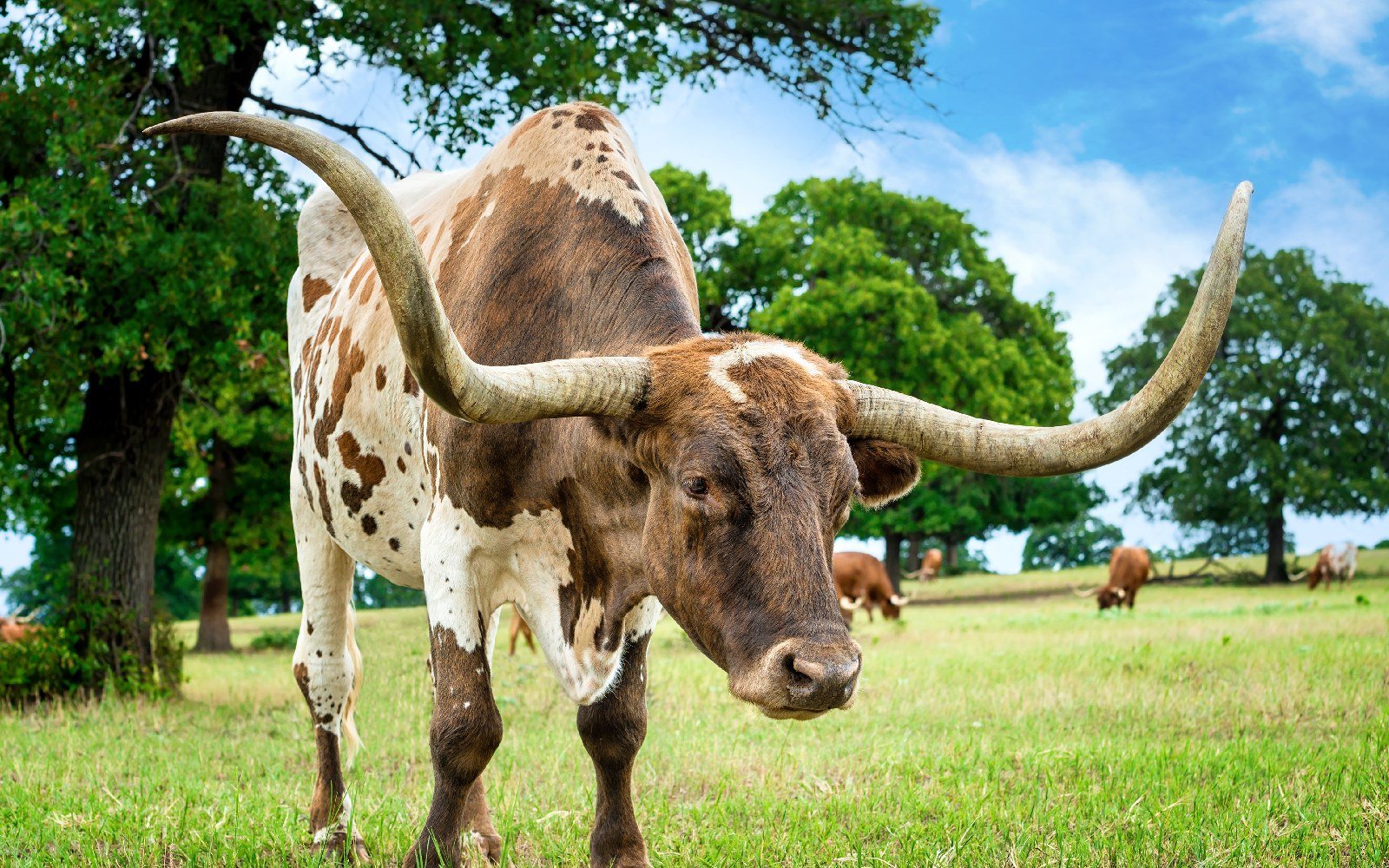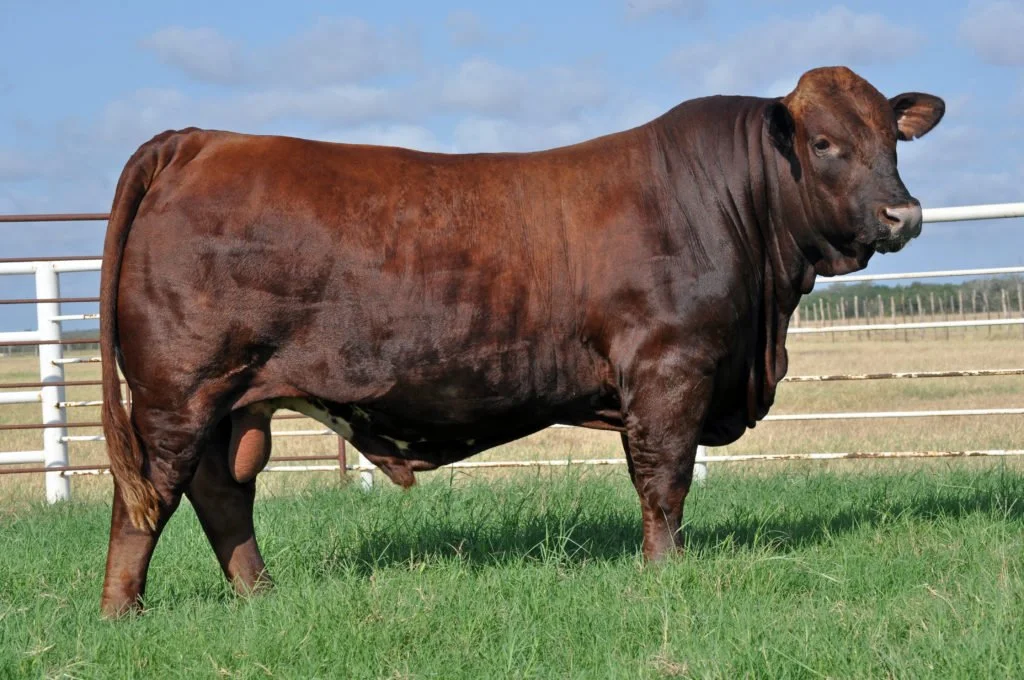The 7 Most Popular Cattle Breeds in Texas
Discover > Raising Cattle > The 7 Most Popular Cattle Breeds in Texas
A relationship that stretches far back into history, cattle-raising and Texas truly go hand in hand. Why’s this? Well, the Lone Star State has ample space for allowing cattle to graze on pastures, and with its sunny climate, the weather conditions are perfect for raising young cows.
From commercial meat factories to sustainable ranches focusing on regenerative agriculture, cattle farming is here to stay in Texas.
When you visit a farmer's market in Texas, you're likely to come across a wide variety of beef products, from prime cuts to sausages and everything in between. All these come directly from the farm, ensuring freshness and quality.
More often than not, the meat is grass-fed and free from antibiotics or hormones, reflecting the Texan cattle farmers' commitment to sustainable and ethical farming practices. It's a win-win situation: you get to enjoy delicious, high-quality beef while supporting local farmers and the state's cattle-raising industry.
In the heart of the Southern United States, Texas cattle have a reputation for being the finest in the country. The Texas Cattle Company has a strong presence here, ensuring the highest quality cow breeds in Texas. Texas isn't just about cattle, it also boasts the freshest local seafood for those who prefer a surf-and-turf experience.
For the steak lover, it's paradise here; every cut is cooked perfectly and often served with a side of creamy mashed potatoes. You'll find a charming vibe at this family-operated restaurant, renowned for its attentive table service and welcoming atmosphere. One must-try item on the menu is the Blue Chips, a local favorite.
The special events team at places like the Texas Roadhouse frequently organizes gatherings where one can indulge in the variety and quality of Texas cuisine. Amidst the current global scenario, strict safety measures are in place to ensure everyone can enjoy their meals in a safe environment.
Planning your next event in Texas? Consider the diverse food scene. With the influence of New Mexico, the local food at these restaurants will not disappoint. And don't forget, if you're celebrating, many places offer a compelling birthday discount. This is the charm of Texas – it's a melting pot of flavors, cultures, and, of course, the finest cattle breeds.
In the Lone Star State, the quality of beef is paramount, and that's why many restaurants take pride in serving dishes sourced from the 7 most popular cattle breeds in Texas, ensuring that their menu reflects the finest local flavors and traditions. So, what are the best cattle to raise in Texas?
Best Texas Cattle Breeds:
Texas Longhorn
And let's not forget about the rich history of the Texas Longhorn. This breed didn't simply appear overnight, no sir. The story stretches back several centuries, with Spanish settlers bringing them to the Americas.
Over time, these resilient creatures adapted to the challenging Texas environment, developing the traits that make them so admired today – notably, their ability to thrive in less-than-ideal grazing conditions and their resistance to many common bovine diseases.
And, of course, those mighty horns are also a key part of the breed's appeal, making each Longhorn a standout in any herd. So next time you're feasting on a bowl of chili made with Texas Longhorn beef, remember, you're not just enjoying a delicious meal, you're savoring a piece of Texas history.
Angus
The journey of Angus cattle from Scottish pastures to American ranches is a fascinating tale of adaptation and recognition. As these gentle giants crossed the Atlantic in the late nineteenth century, their unassuming demeanor wasn't initially perceived as a clear advantage.
Yet, within a decade of their arrival, their docile nature and easiness to herd catapulted their popularity among American ranchers. Specifically in the vast landscapes of Texas, the less aggressive Angus bulls proved to be a game changer, reducing the risks and increasing the ease of cattle raising. This is why the Angus is often regarded as one of the best beef cows for beginners.
The transformation of Angus beef from an unfamiliar import to a familiar sight in American butcheries tells the story of consumer preference shaped not only by taste and quality but also by sustainable and humane farming practices.
It's not just about the superior marbling, tenderness, or succulent flavor that Angus beef is renowned for. It's also the peace of mind that comes from knowing these cattle were raised in less stressful environments, contributing to the overall quality and taste of the meat.
Whether you're picking up a steak for a weekend barbecue or selecting a roast for a holiday dinner, the Angus label represents a guarantee of quality that has stood the test of time.
Charolais
The Charolais (pronounced “cha-ro-lay”) breed has a rich history. Originating from the Charolais region in France, they're known for their distinctive pale, straw-like coloring.
But don’t let their gentle appearance fool you. These beauties are some of the biggest and most muscular in the bovine world. Their exceptional growth rates make them a hit for beef production, and they're also super adaptable, thriving just as well in warm climates as in cooler ones.
So, why does this matter? Well, if you're in the beef biz, these traits make Charolais a top pick. They have a knack for converting feed into muscle (hello, yummy steaks!) faster than other breeds, which is a massive plus for farmers.
And it's not just about quantity; it's also about quality. Charolais beef is known for its superb marbling and flavorful taste, making it a favorite among beef connoisseurs. So, going with Charolais is a pretty smart move if you want to keep your customers happy and your bottom line healthy.
Brahman
The tale of the Brahman breed's journey from India to the United States is a testament to their resilience and adaptability.
They were highly respected in their homeland, often seen as symbols of wealth and prosperity, reflecting the deep cultural bond between the people and these majestic beasts.
When they made their way to America in 1885, they found themselves in a vastly different environment. Yet, they thrived and eventually evolved into the tough breed they are known as today.
The Brahman cattle's unique characteristics truly shine in the drier parts of Texas, where conditions can be harsh and unforgiving.
They are particularly well-suited to these desert-like regions due to their ability to withstand high temperatures and scarcity of water—an adaptation they likely developed in India’s hot, dry climate. The hump on their neck and shoulders isn't just distinctive—it serves a crucial role in helping them survive in these conditions.
It stores fat that the animal can use when food and water are scarce. Their floppy ears and curved horns aren't just for show. The ears help to dissipate heat, while the horns are used for defense.
Indeed, the Brahman breed is a prime example of nature's ability to adapt and thrive in the face of adversity—a tale of resilience and survival that is etched in every feature.
Hereford
Talk about an adventure! The Hereford cattle, taking a transatlantic journey from the green fields of Herefordshire, England, planted their hooves firmly in the Texan soil.
They were brought over to the US in 1817, and boy, did they make an impression! Their popularity didn't just make a splash; it caused a wave that washed over the entire country, cascading down through Mexico and rippling out across South America.
What's the secret sauce? These Hereford bulls have exceptional breeding capabilities, and let's face it, that's exactly what you want when you're in the business of producing top-notch beef.
But hold your horses! Among four other cattle breeds, the Hereford might be the big shots of Texas ranching, but they sure aren't the only game in town. The Texan farming community isn't just sticking to the tried and true – they're explorers, adventurers if you will.
Peek into their pastures, and you might spot some farmers mixing it up, cross-breeding these steadfast champions with Wagyu cattle. You heard right, the breed that gives us that melt-in-your-mouth, luxurious Japanese beef.
It's a bold strategy, combining the robustness of American breeds with the premium qualities of Wagyu – talk about the best of both worlds!
Beefmaster Cattle
The Beefmaster cattle's notable traits extend to their impressive physical structure as well. They are large-bodied, with mature bulls often weighing over 2000 lbs, and mature cows averaging 1200 lbs.
This size advantage, combined with their efficient feed conversion, directly contributes to their superior beef production. Their substantial muscle mass and low-fat distribution also result in higher-quality cuts of meat.
But the Beefmaster cattle are not just about size and productivity. They pack plenty of personality with their brawn. Known for their docile temperament, they are easier to handle than other breeds, reducing the stress levels for both the cattle and their handlers.
This gentle nature also minimizes the risk of injury on the farm, making the day-to-day operations smoother.
Furthermore, Beefmaster cattle are relentless survivors. When faced with adverse conditions, they demonstrate remarkable resilience. Whether it's a harsh winter or a scorching summer, they can withstand extreme weather variations thanks to their layered coats that serve as insulation.
This hardiness is boosted by their high resistance to diseases and pests, a trait inherited from their Brahman ancestry.
To top it all, Beefmaster cows exhibit commendable maternal instincts. They are fiercely protective of their calves, ensuring a higher survival rate. The cows also have a high fertility rate and can produce calves annually, which is a significant advantage for beef production.
All in all, the Beefmaster cattle truly live up to their name, offering beef ranchers and farmers a fine balance of quantity, quality, and ease of management.
Their hardiness, productivity, and docile nature make them a valuable asset in the world of ranching and beef production.
South Poll Cattle
South Poll cattle's unique characteristics don't just stop at their vibrant red hue and smaller frame. Notably, these creatures can maximize the benefits of the pastures they graze upon.
Their ability to get their nutrition solely from grass is a testament to their adaptability and contributes significantly to sustainable farming practices. Among many of the types of cows in Texas, the inception of the South Poll in the 1990s was a significant milestone in the cattle industry, bringing together the robust traits of the Angus, Hereford, and Senepol breeds.
The "slick-haired" attribute of the South Polls is more than an aesthetic preference. It contributes to their high tolerance for heat, enabling them to be raised in various climatic conditions.
Furthermore, their calm demeanor makes them easy to handle, a quality much appreciated by ranchers and farmers. Their breeding focus on fertility and lifespan ensures a healthy, thriving population.
South Poll's tender meat sets the breed apart. Comparable, if not superior, to the straight-bred English cattle, it offers consumers a unique taste experience. Their grass-fed diet is believed to contribute to the superior meat quality, satisfying the palate of even the most discerning gourmets.
The popularity of South Poll cattle among ranchers and farmers seeking a low-maintenance, grass-fed breed is a testament to its adaptability and the quality of its produce. The unwavering commitment of Texas to raising this unique breed, coupled with the new generation of farmers' emphasis on sustainable grazing methods, underlines a dynamic and progressive cattle industry in the region.
Change is the only constant in the Texas cattle industry, and the rise of South Poll cattle is a prime example of that evolution among the other types of cattle in Texas.
As TexasRealFood partners with the American Grassfed Association, we present 7 Austin farms offering pickup services for top-notch grass-fed beef.
Do you want to become a successful farmer? Click here!
Looking for the best BBQ spots in Austin? Check it out here.









